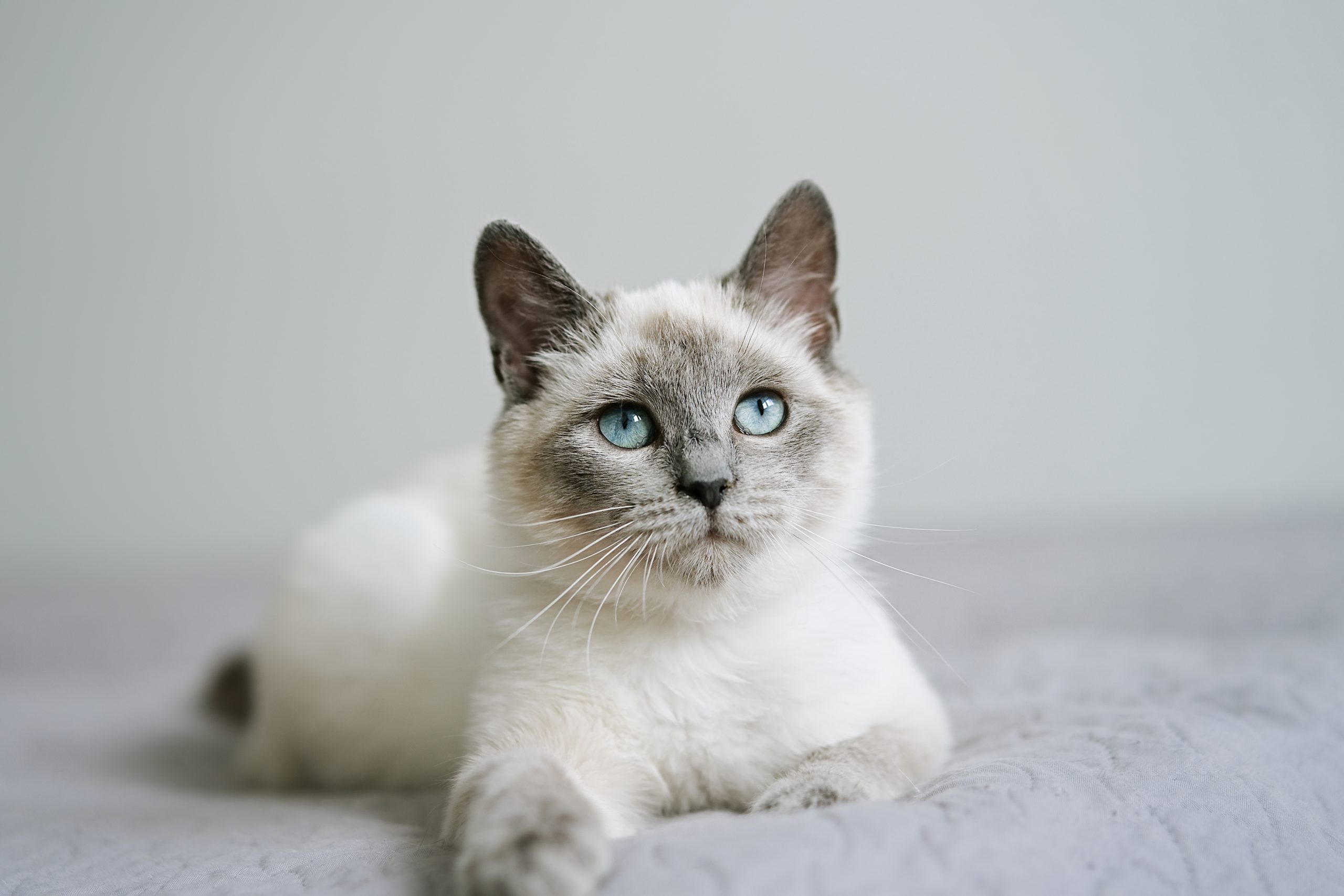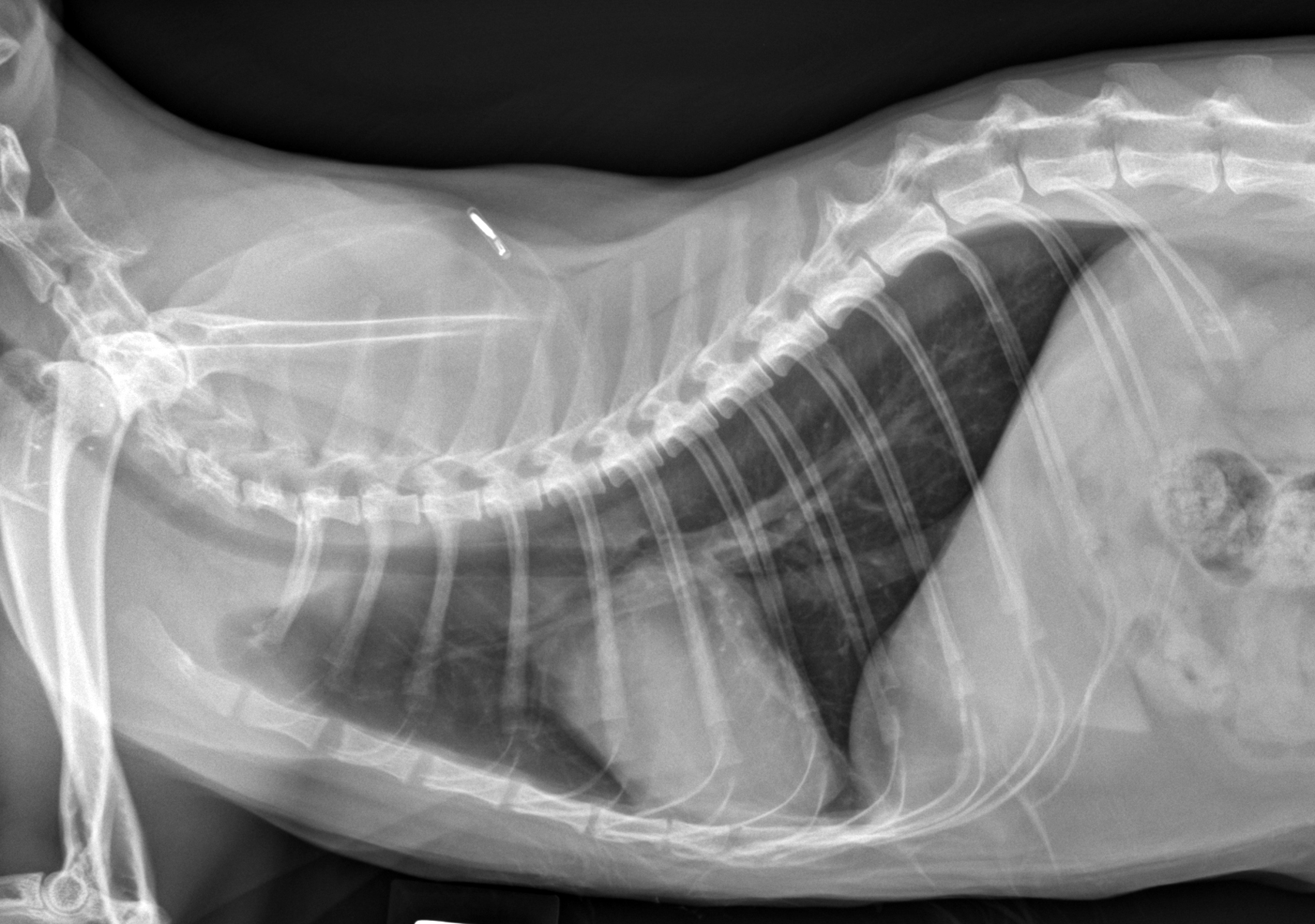
Mickey
 Case Background
Case Background
Age: 14 years
Sex: Male
Breed: Feline, Domestic Medium Hair
Weight: 6.2 kg
Reason for visit: Murmur evaluation, heard by general veterinarian at wellness appointment.
 Clinical History
Clinical History
Please review Mickey’ clinical history.
Attitude/demeanor: Calm, alert
Coughing: No cough reported
Respirations: Eupneic, 32 breaths per minute
Exercise tolerance: No change reported
Sleep patterns: Sleeping well, most of the day
Weight change (loss or gain): No change in weight
Appetite: Normal appetite
Usual diet: Iams® Feline Senior
Vomiting: Rare vomiting, 1-2x monthly
Diarrhea: None noted
Syncope: None observed
Change in urinary habits: None observed
Change in drinking habits: None observed
 Physical Exam - General
Physical Exam - General
Please review the results of Mickey’s physical exam.
Body condition: Slightly over-conditioned, BCS 6/9
Attitude: Calm, alert
Mobility | gait: Not assessed
Posture: Normal
Hydration: Normal
Body temperature: 102.1 F
Arterial pulse – rate, regularity, intensity: 176 beats/min, regular, slightly hyperkinetic
Respiratory effort: Effort 32 breaths per minute, normal
Mucous membranes – color & CRT: Pink
Jugular venous pulse & pressure: Slight distension, no pulsation
Abdominal palpatation: Both kidneys have irregular contours on palpation; the rest of the abdominal palpation is non-tender and normal
Lymph nodes: Normal
Oral cavity: Mild gingivitis and plaque
Other abnormalities: Slightly rough, dry hair coat
 Physical Exam - Auscultation
Physical Exam - Auscultation
Let’s auscult Mickey’s heart & lungs. (Recommend listening with high-end headphones)
 Physical Exam - Differential Diagnosis
Physical Exam - Differential Diagnosis
- High (could explain most or all of the signs)
- Possible (less likely to explain most of the signs)
- Unlikely
 Diagnostic Test Selection
Diagnostic Test Selection
 Blood Pressure
Blood Pressure
Diastolic blood pressure: Not available for this case
Mean blood pressure: Not available for this case Consensus Statements of the American College of Veterinary Internal Medicine (ACVIM) provides the veterinary community with up-to-date information on the pathophysiology, diagnosis, and treatment of clinically important animal diseases. In 2018, ACVIM published updated guidelines for the identification, evaluation, and management of systemic hypertension in dogs and cats in the Journal of Veterinary Internal Medicine.
Click here to view and download a PDF of the ACVIM Consensus Statement, guidelines for the identification, evaluation, and management of systemic hypertension in dogs and cats.
 Radiography
Radiography
Please review Mickey’s thoracic radiographs.
Click here for Mickey’s radiograph viewer (measure VHS here) View the ventral dorsal radiograph
 Clinical Labs
Clinical Labs
BUN: 34 mg/dL, Normal: 5 – 20 mg/dL
Creatinine: 2.2 mg/dL, Normal: 0.9 – 2.1 mg/dL
Sodium: 144 mEq/L, Normal:146 – 156 mEq/L
Potassium: 3.8 mEq/L, Normal: 3.2 – 5.5 mEq/L
Chloride: 118 mEq/L, Normal: 114 – 126 mEq/L
ALT: 52 IU/L, Normal: 20 – 95 IU/L
ALP: 80 IU/L, Normal: 15 – 65 IU/L
Heartworm
Heartworm: Not performed
Urinalysis
Urinalysis – USG: 1.018
Urinalysis – protein: Trace
Urinalysis – biochemical: No significant findings
Urinalysis – sediment evaluation: No significant findings
CBC
White blood cells: Not evaluated
Red blood cells: Normal PCV – 34%
Platelets: Not Evaluated
Total T4
Total T4 test results: 2.1 micrograms/dL
NT-proBNP
NT-proBNP test results: 497 pmol/L
 Echocardiography
Echocardiography
Your technician just returned with the results of Mickey’s echo.
Please view the video and interpretations that follow.
Click here to watch Mickey's echo
LV chamber size and thickness: The left venticular walls show symmetrical concentric hypertrophy, measuring thicker than normal. Normal cats have walls that measure 3 to 5 mm in end-diastole with any measurement over 6 mm consistent with hypertrophy. Mickey’s left ventricular freewall and septum measure from 6.5 to 8.5 mm in thickness. In addition, his papillary muscles, seen best in the short-axis images, are severely hypertrophied.
Left atrial size: Left atrial size appears mildly dilated, but measurements are required to confirm enlargement. His left atrium did measure slightly larger than normal at 17 mm at end-systole (normal cats have a left atrium that typically measures 11 to 16 mm in diameter).
LVIDd & LVIDs: Left ventricular internal dimensions appear normal to slightly reduced as a consequence of the concentric hypertrophy.
LV shortening fraction: Mickey’s fractional shortening is normal to hyperdynamic. Most cats have a fractional shortening of 35 to 55%; Mickey’s measured 57% likely related to the thick walls compromising his systolic dimension.
RA, RV and pulmonary artery: Images of the right heart are not fully shown, but were normal in this cat.
Effusions: There are no effusions apparent.
Doppler results: Color Doppler shows turbulence in the left ventricular outflow tract beginning at the site of mitral-septal contact. This is a consequence of altered left ventricular, papillary, and mitral valve geometry resulting in SAM – systolic anterior motion of the mitral valve.
 Referral
Referral
 Diagnosis & Treatment
Diagnosis & Treatment
You’re ready to form a diagnosis and treatment plan for Mickey! Please select your answer to each question below.
 Follow-up Treatment
Follow-up Treatment
 Post Test - CE
Post Test - CE
To qualify for CE credit, please answer the following 5 questions.
 RACE Certification
RACE Certification
RACE Certification
Fill out the following form in order to receive your certificate.

